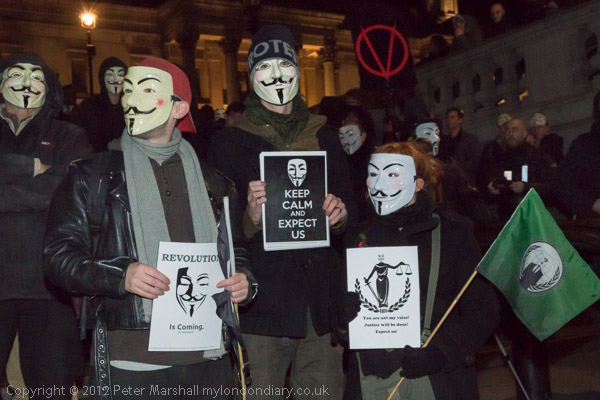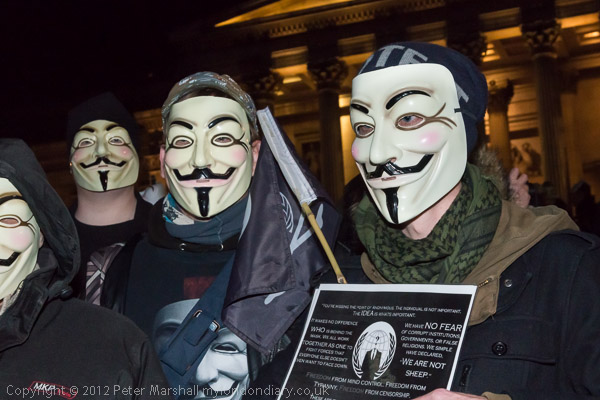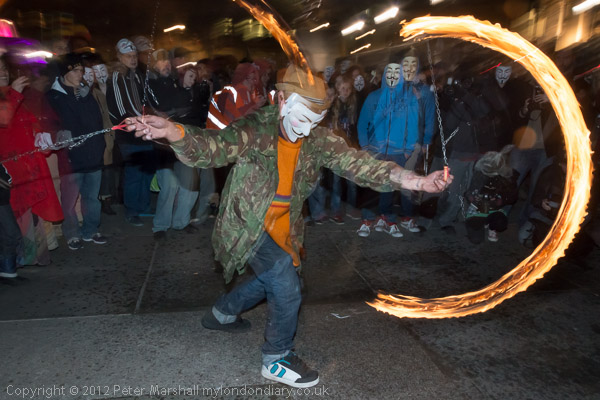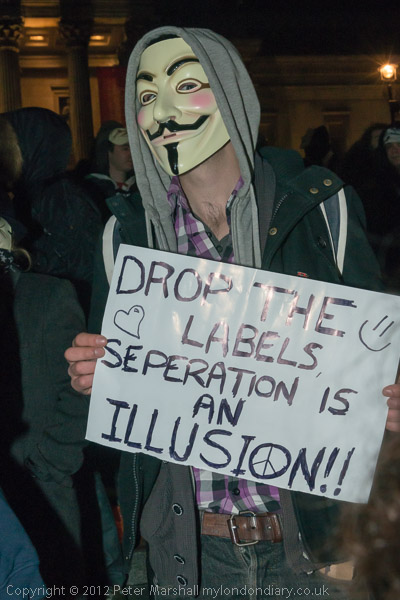Anonymous March to Parliament – On Monday 5th of November 2012 around two thousand Anonymous supporters met in Trafalgar Square and marched to Parliament Square against austerity, the cuts and the increasing gap between rich and poor, warning the government they need to change.
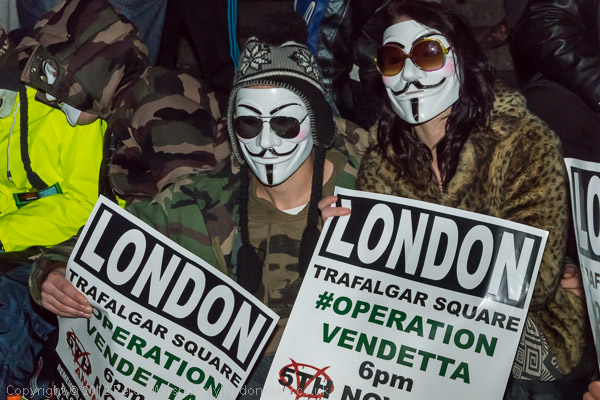
This was part of #Operation Vendetta, which they described as “a worldwide Anonymous operation of global strength and solidarity, a warning to all governments worldwide that if they keep trying to censor, cut, imprison, or silence the free world or the free internet they will not be our governments for much longer.”
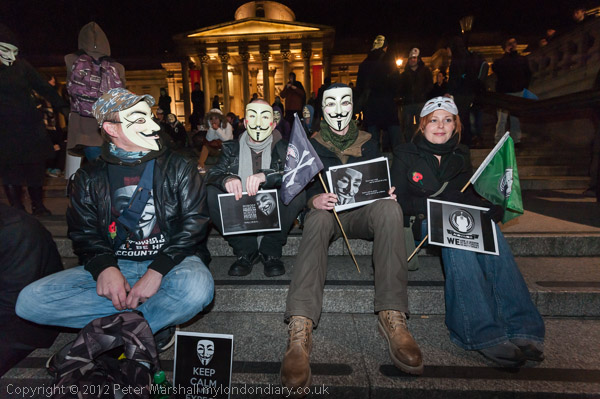
Wikipedia describes Anonymous as “a decentralized international activist and hacktivist collective and movement primarily known for its various cyberattacks against several governments, government institutions and government agencies, corporations and the Church of Scientology.” The article also quotes their common tag-line “We are Anonymous. We are Legion. We do not forgive. We do not forget. Expect us.“
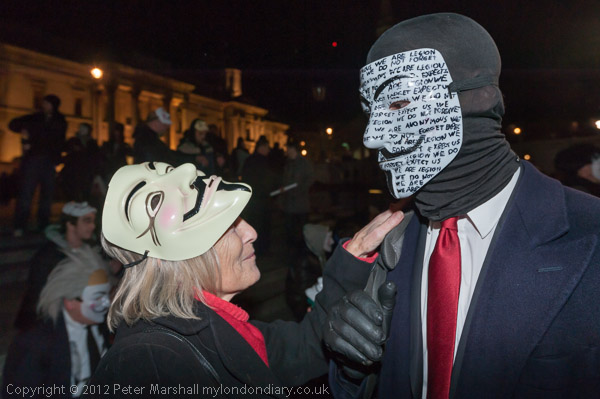
Anonymous supporters or ‘Anons’ remain anonymous by wearing masks styled on those in David Lloyd’s illustrations, based on those used in London in 1605 by Guy Fawkes, for Alan Moore’s graphic novel V for Vendetta which features ‘V’, an anarchist revolutionary and superhero who dresses in a mask and cloak. In 2005 the story was made into a film and masks based on Lloyd’s drawings were mass-produced as merchandise for this, copyrighted by Warner Brothers who collect royalties on them, though there have been many pirated versions.
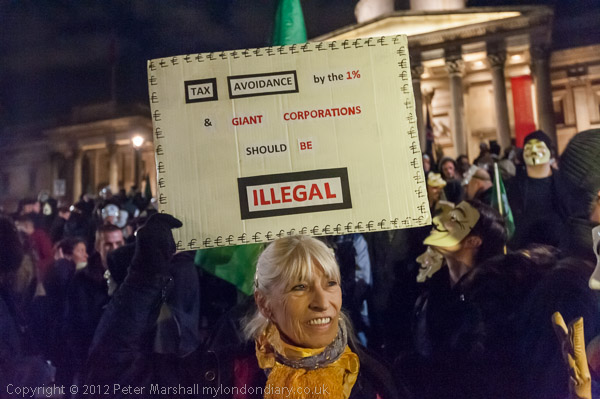
The complex story, written when Thatcher was prime minister and set in the near future is set in a Britain after a nuclear war in which the UK suffered little direct damage as a Labour government had renounced nuclear weapons and closed US bases before it broke out. But in the post-war chaos corporations and fascists hadtaken power and established a totalitarian state. In the story which begins on Guy Fawkes Night in London in 1997, V engages in a number of attacks against the regime, including on 5th November 1998 blowing up the Post Office Tower and it ends following V’s death with a general insurrection in which Downing Street is blown up by an Underground train carrying V’s body.
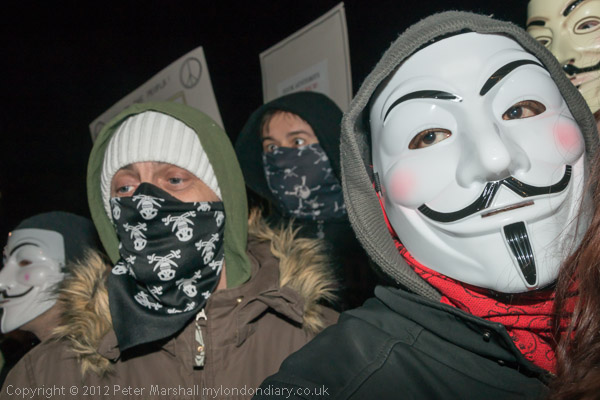
Of course there is no Underground line below Downing Street although there are underground tunnels below much of Whitehall and elsewhere in London some of which are used by police and security services. They were built 100ft down for communications cables during World War 2 and the network was expanded during the Cold War Era.
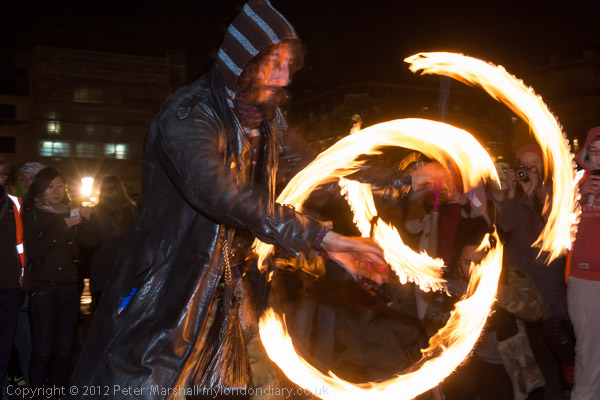
Across the world Anonymous has carried out a number of sometimes successful cyber-operations as well as launching real-world protests, particularly against Scientology and child pornography sites.
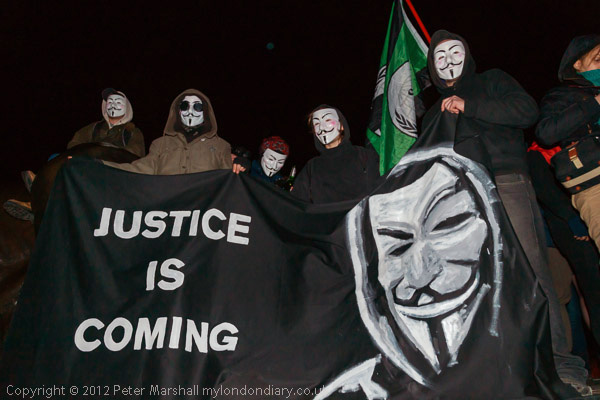
This protest in London called for an end to cuts in education, health and welfare and the end of ‘austerity measures’ that target the poor and vulnerable, calling on the government to tackle the causes of the problems, including the banks and tax avoidance and evasion. They also want freedom for the Internet, with respect for the privacy of Internet users and the dropping of the Communications Data Bill.
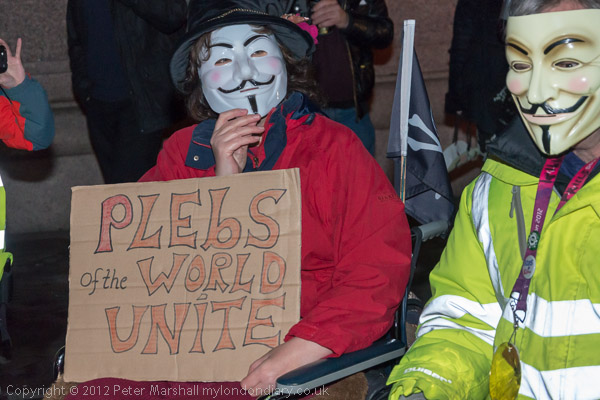
They also demanded the release of Internet activists who they say are political prisoners, including Julian Assange then still holed up in a London embassy, Richard O’Dwyer wanted in the US for alleged copyright infringements, and the “PayPal 14, Jeremy Hammond, Topiary and the 4 anons of the UK that will stand trial on November 7th.”
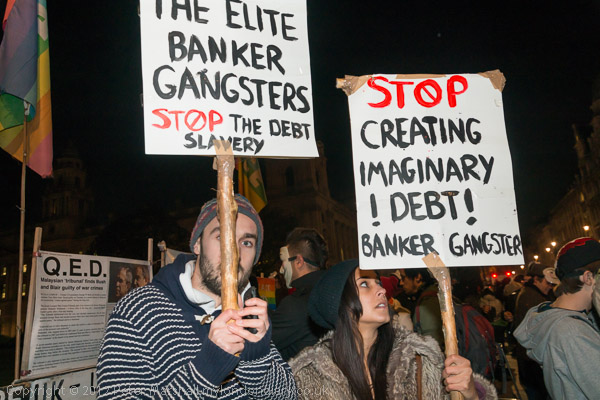
Although the Anons had stressed this was to be an entirely peaceful event the police were taking few chances and were out in force, perhaps reacting more to the events in the novel than the actual event they were policing.
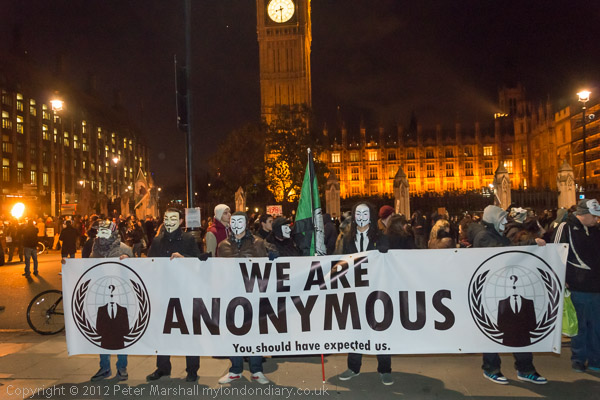
The event itself as might have been expected was chaotic, and the movement from Trafalgar Square to Parliament Square was more a drift than a march. Police reacted angrily after the protests simply walked around a line of police trying to stop them were simply walked around and one officer clearly lost his temper at the insistent taunting and photographing by the activists, but police and other protesters soon calmed things down.
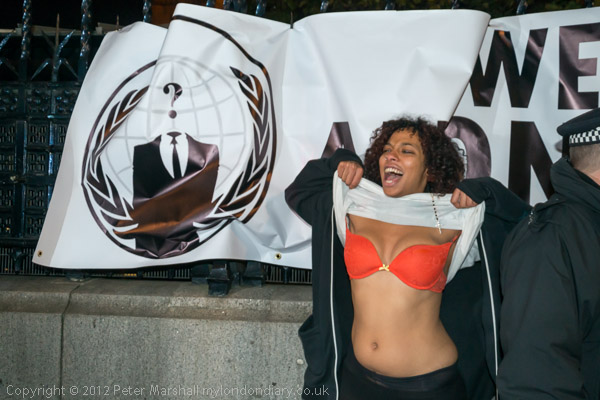
Banners were raised along the fence outside the Houses of Parliament, and one young woman removed her shirt to pose in her bra. The ‘heritage wardens’ tried to stop people using fire poi in the square but soon had to give up as more and more began to perform. Police tried without much success to clear the roads to keep traffic moving around the square, and a ‘Transport for London’ lorry managed to effectively block a junction to hold up the bus I was on for over 10 minutes after I had decided to go home. The protest apparently continued for several hours after I’d left.
More on My London Diary at Anonymous March to Parliament.
